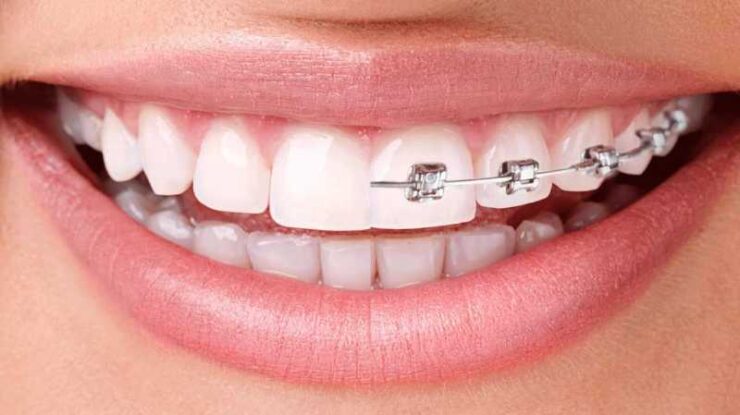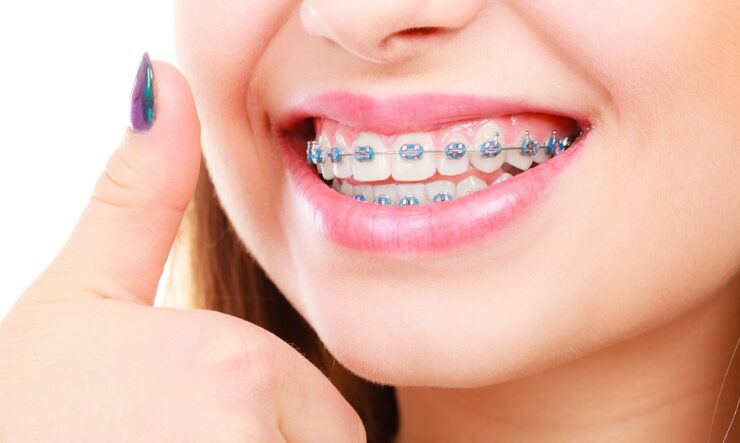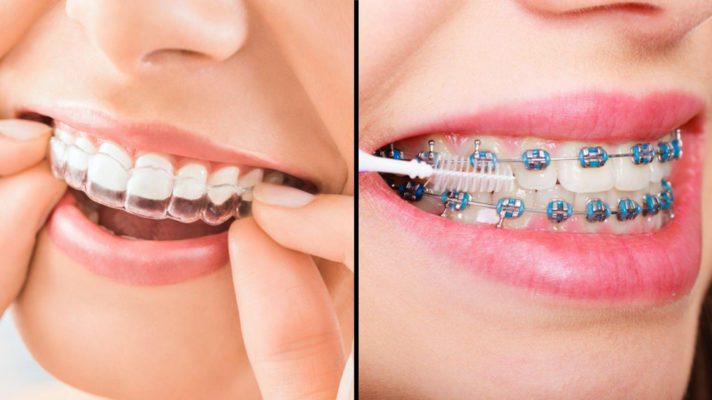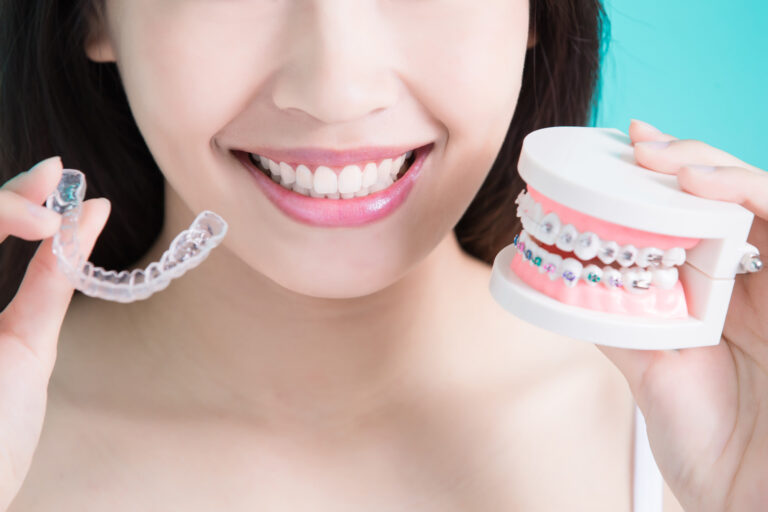When it comes to straightening your teeth, you have a lot of different options available to you. Two of the most popular options are braces and Invisalign. Both of these treatments can effectively correct various dental issues, but each has advantages and disadvantages. It is important to take the time to consider the pros and cons of each before deciding which one is better for you. To help you make an informed decision, this article will provide an overview of the differences between braces and Invisalign, so you can decide which is best for your individual needs.
What Are Braces and Invisalign?

Both of them are common orthodontic treatments that correct misaligned teeth and malocclusion. Both the options are designed to improve the appearance of the teeth, but there are several differences between the two.
Braces are the traditional orthodontic treatment, consisting of metal brackets and wires fixed to the teeth. The metal brackets are attached to the teeth with a special adhesive, and a metal archwire is threaded through the brackets. They can be used to treat a variety of conditions, including overbite, underbite, crossbite, and crowding.
Invisalign is a newer orthodontic treatment that uses clear, removable plastic aligners to straighten teeth. The aligners are custom-made to fit each patient’s mouth and can be worn for 22 hours daily. Invisalign is an excellent option for adults and teens who want to avoid the metal wires and brackets of traditional braces.
One of the biggest differences between the two is cost. Braces are typically more affordable than Invisalign, but Invisalign may be covered by insurance. Another difference is the treatment time. They usually take 18-24 months to fix your teeth, while Invisalign typically takes 12-18 months.
Additionally, they are not removable and require regular adjustments, while Invisalign aligners can be removed for eating, brushing, or special occasions. Ultimately, the best option for straightening teeth depends on each patient’s needs. Some patients may benefit more from braces, while others may be better suited for Invisalign. A qualified orthodontist can help determine which treatment is best for each patient.
Benefits of Braces

Though children and teenagers most commonly wear them, they can also be used to help adults. Braces work by applying steady pressure to teeth, gradually moving them into the desired position.
Crooked and misaligned teeth can be difficult to clean and maintain and using braces is one of the best ways to treat them. The benefits of braces are numerous, ranging from aesthetic to health-related. Not only can they improve the look of a person’s smile, but they can also help make teeth easier to clean, improve their function, and reduce the risk of dental health problems. For these reasons, braces are important for maintaining good oral hygiene and boosting overall health.
Benefits of Invisalign
Invisalign is a modern orthodontic treatment that uses clear and customized aligners to move teeth into the desired position. Unlike traditional metal braces, It does not require frequent dental clinic visits and does not have to be worn for years to obtain desired results. Also, it offers a variety of benefits, including aesthetic and convenience advantages. The main benefit of using it just like braces, is its aesthetic appeal. If you are looking for the best orthodontist to get your Invisalign installed, check out Dr David McSurdy.
One of the greatest advantages of this option is that it is a less invasive treatment than traditional braces. It does not require metal wires, brackets, or bands to be placed on the teeth. This makes the treatment less painful and more comfortable for the patient. It also reduces the risk of gum irritation and other side effects that can come with metal braces.
Another benefit of this option is its convenience. These aligners are removable, allowing the patient to eat, brush, and floss easily. Traditional braces, on the other hand, require a strict brushing and flossing regimen to be followed. They also require fewer adjustments and visits to the orthodontist than traditional braces, which can make it a more cost-effective option.
They offer a variety of benefits for those who are seeking orthodontic treatment. Its convenience makes it an attractive option, and its speed and less invasive nature make it an ideal choice for those who want to get their teeth straightened quickly and comfortably.
Cost Comparison
Both of them are two popular orthodontic treatment options that people opt for correcting their smile. Both can help straighten teeth and correct misalignments, but there are some important differences. One of the main differences between the two is the cost. Invisalign can cost more than braces, but there are some things to consider when deciding which treatment is best for your needs.
Invisalign is a system of clear aligners custom-made to fit each patient’s needs. Braces typically require more frequent adjustments than Invisalign, as they must be tightened every 6 to 8 weeks. The cost of both the options can vary widely depending on the individual case and the orthodontist. In general, Invisalign tends to be more expensive than traditional braces. The average cost of it is around $5,000 to $8,000, while the average cost of braces is around $3,000 to $7,000.
Insurance coverage can help offset the cost of both options. In addition to the cost, there are a few other factors to consider when it comes to choosing in between the two options. Invisalign aligners are removable so that they can be taken out for eating and cleaning. This makes it easier to maintain oral hygiene during treatment.
Conclusion

While braces and Invisalign both have pros and cons, Invisalign is the clear winner regarding convenience and comfort. Invisalign is also much more discreet than braces, allowing patients to feel more confident and relaxed during their treatment. Plus, Invisalign aligners can be removed for eating, brushing, and flossing, which helps to keep the teeth and gums healthy. Invisalign also offers a more tailored treatment plan with shorter treatment times so that patients can see results faster. Ultimately, Invisalign is better for those who want a more comfortable and effective orthodontic treatment.
Related Posts:
- 20 Best Gaming Headset Under 50$ 2024 - for PC, PS4,…
- Top 10 Best Scrubs For Women 2024 - Pants for Nurses…
- Top 10 Best Outdoor Basketball Shoes 2024 - Durable…
- 15 Best Shoes for Walking on Concrete 2024 - Soft &…
- Top 10 Best Inflatable Kayak 2024 - for Exploring…
- Top 10 Best Dog Nail Grinder 2024 - Best Care for Your Pet







